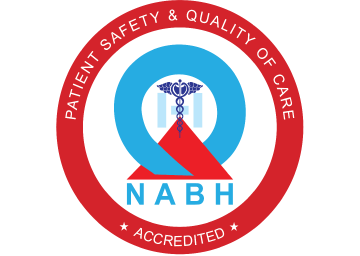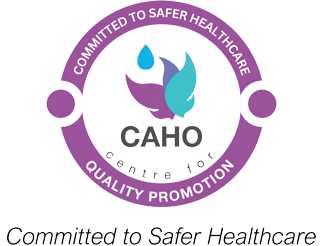Deformity Correction
Parents may bring their children with a difference in the shape and size of the limbs which we call as deformity (an abnormal shape or bend). Neglected deformities are common in our country and these deformities are complex and challenging to correct. They result in various levels of restriction of activities and modification of activities of daily living. In children there will be compromise in their mental, psychological and social relationships. Our team of paediatric orthopaedic surgeons take every effort to understand the need for each and every child and to cater their needs to make their life better.
Deformities can be either congenital (those present since birth), or developmental (acquired late in their life) which can be due to various reasons like
- Injury (after a fracture close to the growth plate),
- Infection happening close to growth plate,
- Tumours (like multiple hereditary exostosis, osteochondromas)
- Metabolic (rickets)
- Idiopathic (unknown cause)
My child should undergo deformity correction now or can we wait?
Our specialists will explain you the necessity or the advantages of the deformity correction when your child needs the correction. In general, any deformity will need to be corrected as they may result in altered biomechanics especially in the weight bearing lower limbs resulting in the early development of arthritis of the joints. As your child will be in the growing age any deformity especially those due to growth plate problems needs to be corrected at the earliest because they become worse as they grow up. You will get adequate and appropriate information and advice by our paediatric orthopaedic specialists regarding the nature and severity of your child’s deformity, timing of the surgery and expected outcome after surgery.
What are the Symptoms?
Parents usually bring the child for the altered gait or appearance and difficulty or restriction of activities which could be progressively increasing or not increasing. The deformities may not be noted immediately after the Usually the initial insult like injury, infection may not show the deformities immediately but will appear later when the growth plate is involved.
How do Doctors Diagnose the deformity?
Diagnosis in case of deformities is usually obvious and will be seen clinically well and, in some cases, need x-rays and MRI, CT scans for evaluation and planning the management. Your child might undergo special x-rays called alignment x-rays on standing posture to check the severity of the deformity and for planning the method of correction and the instrumentation required for the surgery. CT scans may be needed to get a 3D analysis of the deformity. MRI is needed to assess the extent of involvement of the growth plate in case of growth plate injuries We do a careful analysis of the deformity preoperatively with computer assisted measurements and software.
The various deformities we treat are either
- Congenital deformities
- Acquired deformities
- Foot deformities in children
Congenital deformities and disorders which we treat at our centre are
- Arthrogryposis multiplex congenita
- Congenital short femur
- Congenital radioulnar synostosis
- Radial club hand
- Ulnar club hand
- Congenital knee dislocations
- Congenital pseudarthrosis of tibia
- Tibial and fibular hemimelia
- Osteogenesis imperfecta
Acquired and developmental deformities we treat are
- Cubitus varus
- Cubitus valgus
- Genu varum
- Genu valgum
- Tibia vara
- Femoral anteversion and retroversion
- Tibial intorsion and extorsion
- Physeal bar
- Burns contractures
Paediatric foot deformities are
- CTEV
- CVT
- Flat foot
- Metatarsus adductus
- Tarsal coalition
Management
The main aim of the deformity correction surgery is to restore back the anatomy and function of the deformed or defective limbs. Management of deformities varies widely depending on the type of the deformity, age of the child and also the severity of the deformity. Our team of Paediatric orthopaedic surgeons will do a detailed clinical evaluation of the child analysing the defect or deformity and we use methods for correction which can be done either acutely (single stage) or gradually (gradual correction)
Some deformities can be corrected quickly or acutely by cutting the bone and straightening it which we call “osteotomy”. This procedure is a single stage correction where the bone is cut and then aligned to the required position and it needs to be fixed in that position till the osteotomy heals well. This fixation is done with help of either
- External fixators - LRS (Limb Reconstruction System) and Ring fixators or
- Intramedullary rods (Rods within the bone), Plates and screws
The other method of correction what we do is by gradual correction. This method can be done with or without doing an osteotomy (cutting the bone) depending upon the condition of the problem. This method is used in case of angular deformities and also in the patients with complex fractures with bone loss. Gradual correction usually done with either
- 8 plates by Growth modulation
- External fixators - LRS (Limb Reconstruction System), Ring fixators and Ortho SUV (Computer software assisted ring fixator correction)
All corrections (osteotomies) are like making a fracture happen (breaking the bone) and it takes time to heal. Sometimes there may be a wedge of bone which needs to be removed or added to correct the deformity. Osteotomies are done after a detailed planning which is a complex system and involves special standing full length alignment x-rays of lower limbs or CT scans before making the plan for the surgery and to work out exactly to where to cut the bone and how much correction will be needed.
The common procedures which we do in deformity correction at our hospital are
- Growth modulation surgeries
- Corrective osteotomies
- Illizarov assisted correction
- Ortho SUV assisted correction
- Limb lengthening procedures
- Physeal bar resection surgeries
What is guided growth or growth modulation surgeries?
This is an effective method of management in angular deformities. It has negligible morbidity and the child will be back to his routine in a day or two. This procedure will be advised to children with significant deformities who still have at least two years to attain completion of their bony growth or whose bones are still in the growing phase. The correction will not happen immediately after the surgery as the implants (plates) which are kept will be close to the growth plates and this plate controls the growth in that region so that the deformity gets corrected gradually. The child has to be on regular follow up and the plates needs to be removed as soon as the deformity gets corrected to avoid complications.


What is Corrective osteotomy?
This procedure is usually done for malunited fractures (broken bones united in abnormal positions) around the elbow and ankle regions and with deformities around the knee at a later stage where growth modulation cannot be attempted and they have already attained their bony growth. They will be recommended single stage correction of the deformities by doing osteotomy site (cutting the bone) which needs to be fixed in a stable manner until the osteotomy (the place where the bone was cut for correction) will unite strongly in the corrected position.
In case of deformities around the elbow, cubitus varus and cubitus valgus are the commonest deformities we treat where the elbow is bent towards the body (cubitus varus) or away from the body (cubitus valgus) respectively. In these patients, we do a corrective osteotomy and wire fixation, which are removed after 6 weeks. Patients return to their normal routine after 12 weeks and this procedure also gives a good cosmetic appearance. Correction is done by doing osteotomy and plating which corrects the deformity and prevents the complications involving the nerve.

Illizarov assisted deformity corrections
This is a ring fixator system which produces very good outcomes in complex problems like infections, nonunions and malunion with deformities, joint contractures with deformities and limb length discrepancies. It is a method of gradual correction of complex deformities using multiple wires holding the rings. You may need to clean the pintracts regularly to avoid pin tract infection.
What is Ortho SUV?
This is the recent and advanced system which is most preferred method for deformity correction around the globe. The Ortho-SUV frame consists of a hexapod circular external fixation device, which utilise computer navigation for simultaneous three-dimensional correction of deformities. It consists of two rings joined by a universal reduction unit comprising six telescopic struts connected to each of the rings directly or by means of plates. This system works by correcting the deformity in six axes in all planes with the aid of software with very good accuracy of correction. Patient’s preoperative deformity and shortening are fed into a software through x-rays and the software after analysing the data given, gives back a feedback on how to proceed with the corrections using the six struts and frames correcting the deformity in all the three planes.

When will my child need a Limb lengthening procedure?
Limb length discrepancy is a term which means that there is a significant difference in the lengths of the limbs when both sides are compared. They can be either congenital (present since birth) or acquired (due to injuries, infections affecting the growth plates) and thus resulting in limb length discrepancy. This is more obviously seen in the lowerlimbs than upperlimbs as the child will walk with limping on the shorter side. When the length difference between the two limbs is atleast more than 2-4 cms then our Paediatric orthopaedic specialist would recommend and counsel you about a possible method of limb lengthening procedure needed for your child. Various methods are available for limb lengthening procedures LRS frames, Illizarov frames or Ortho SUV frame application. This is needs regular follow up and gradual distraction needs to be done by parents at home and the fixators will be removed after the desired length is achieved and the bone becomes stronger to walk.

What is Physeal bar resection?
Physis is the growth plate which is present d in the during childhood and gives the height of the limbs which is needed and in patients who develop deformities post trauma due to injury of the physis and who present to us with a physeal bar, we do an MRI of the physis to check the amount of physis involved. When the percentage of physis damaged is not more than 30%, we do a physeal bar resection which detethers the arrest of the growth plate and resumes the growth of the limb at a normal pace. In those patients who does not have adequate amount of growth remaining or in those whom the involvement of the physis is more, the we do corrective osteotomy and plate fixation which is done after a detailed evaluation of the amount and plane of the deformity.

How to care when child is in external fixator?
You might need to take some additional care for your child when they are treated with a fixator for deformity correction as you might require to do
- Daily pin tract care for the fixator
- Multiple adjustments to the frame (on a daily basis)
- Weekly or fortnightly doctor visits
- Physical therapy for avoiding tightness of muscles and tendons
- Crutches or walker to help with daily activities like walking.
When to contact us?
You might need to contact us if the child develops
- Severe pain
- Redness
- Swelling around the pin site
- When you notice any pus discharge around the pin site
- Child develops fever




